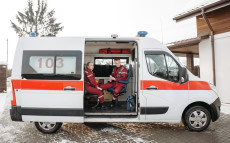- pathfindersAI
- Job Profile
Firefighters
Summary
Firefighters: A Noble and Essential Profession
What They Do
Firefighters are the unsung heroes who stand ready to risk their lives in face of danger, providing an indispensable public service. Their primary role involves combating and extinguishing fires that threaten both life and property. However, their duties extend far beyond this pivotal task. Firefighters often respond to a variety of emergencies, including medical incidents, natural disasters, and hazardous material spills. Through rigorous training and an unwavering commitment to public safety, they are able to expertly navigate perilous situations, ensuring the well-being of the community they serve.
Job Responsibilities
The responsibilities of a firefighter are multifaceted and dynamic. First and foremost, they are charged with the rapid response to fire alarms, where they employ both strategic thinking and physical prowess to combat blazes. They operate complex fire-fighting equipment, such as hoses, ladders, and extinguishers, to control and eventually quench fires. In addition to fire suppression, firefighters provide critical emergency medical assistance, often working as first responders, stabilizing injured individuals before paramedics arrive.
Furthermore, firefighters play a crucial role in fire prevention and community education. They conduct inspections of buildings to ensure compliance with fire codes and safety regulations. Through public outreach initiatives, they educate the populace on fire safety practices, teaching individuals how to prevent fires and what to do in the event of an emergency. Administrative responsibilities also fall within a firefighter’s purview, including the completion of detailed reports documenting the incidents they respond to.
Essential Skills
To excel as a firefighter, a diverse skill set is required. Firstly, physical stamina and strength are paramount, as the job often demands strenuous activity under demanding conditions. Equally important is mental fortitude; firefighters must remain calm and decisive in high-pressure situations, often having to make life-or-death decisions within seconds. Strong problem-solving abilities and quick thinking are essential, as is the capability to work effectively within a team. Communication skills are also crucial, enabling firefighters to relay critical information efficiently and clearly, both among themselves and to the public.
Educational Pathways
The journey to becoming a firefighter typically begins with completing a high school diploma or equivalent, followed by specialized training at a fire academy. Fire academies offer rigorous programs that combine classroom instruction with hands-on experience, covering areas such as fire science, emergency medical services, and hazardous materials handling. Many aspiring firefighters also pursue further education, obtaining associate or bachelor’s degrees in fire science or related fields. These advanced programs often delve deeper into fire behavior, fire prevention, and leadership skills, providing a solid foundation for career progression.
In addition to formal education, prospective firefighters often require certification as Emergency Medical Technicians (EMTs), given the prevalence of medical emergency responses in their duties. Continuous training and professional development are also integral to maintaining and enhancing their skill set throughout their career.
Career Prospects
The career prospects for firefighters are promising and stable, with the demand for their services expected to remain robust due to ongoing urban development and the ever-present risk of fire and other emergencies. Entry-level positions typically start as probationary firefighters or firefighter trainees, advancing to roles such as firefighter, engineer, lieutenant, captain, and even chief, based on experience, education, and performance. Opportunities for specialization exist, allowing firefighters to focus on areas such as hazardous materials, urban search and rescue, or fire inspection and investigation.
Conclusion
Firefighting is a profession characterized by selflessness, bravery, and an unwavering dedication to public service. It requires a unique balance of physical strength, mental resilience, and a commitment to lifelong learning and skill development. For those who feel called to serve, the path to becoming a firefighter offers a fulfilling and impactful career, one that plays a crucial role in safeguarding our communities and saving lives. As society continues to evolve, the need for skilled and compassionate firefighters will remain a cornerstone of public safety, making it a noble and profoundly rewarding career choice.
Video
Compensation
| State | Median Salary | Median Hourly | Positions |
|---|---|---|---|
| SC | 45,540 | 21.90 | 6,710 |
| SD | 51,330 | 24.68 | 470 |
| TN | 42,220 | 20.30 | 5,030 |
| TX | 59,880 | 28.79 | 28,570 |
| UT | 46,180 | 22.20 | 2,750 |
| VT | 48,260 | 23.20 | 390 |
| VA | 54,170 | 26.04 | 10,770 |
| WA | 88,230 | 42.42 | 6,660 |
| WV | 40,100 | 19.28 | 1,070 |
| WI | 44,710 | 21.49 | 7,430 |
| WY | 52,250 | 25.12 | 680 |
| CA | 80,330 | 38.62 | 27,750 |
| AL | 41,290 | 19.85 | 6,960 |
| AK | 58,280 | 28.02 | 1,130 |
| AZ | 52,380 | 25.18 | 7,380 |
| AR | 39,940 | 19.20 | 2,530 |
| CO | 72,930 | 35.06 | 6,310 |
| CT | 76,480 | 36.77 | 3,050 |
| DE | 42,970 | 20.66 | 600 |
| DC | * | * | 1,400 |
| FL | 55,000 | 26.44 | 22,130 |
| GA | 42,950 | 20.65 | 11,090 |
| ID | 47,240 | 22.71 | 2,020 |
| IL | 80,380 | 38.65 | 14,950 |
| IN | 58,930 | 28.33 | 9,270 |
| IA | 50,460 | 24.26 | 1,940 |
| KS | 42,370 | 20.37 | 3,190 |
| KY | 34,430 | 16.55 | 4,530 |
| LA | 30,770 | 14.79 | 5,110 |
| ME | 46,900 | 22.55 | 2,300 |
| MD | 65,090 | 31.29 | 4,460 |
| MA | 70,270 | 33.78 | 11,770 |
| MI | 51,200 | 24.61 | 7,080 |
| MN | 38,750 | 18.63 | 4,760 |
| MS | 36,130 | 17.37 | 2,420 |
| MO | 45,050 | 21.66 | 5,570 |
| MT | 60,950 | 29.31 | 1,110 |
| NE | 69,040 | 33.19 | 1,040 |
| NV | 63,600 | 30.58 | 2,130 |
| NH | 51,470 | 24.75 | 2,540 |
| NJ | 85,330 | 41.02 | 5,530 |
| NM | 41,790 | 20.09 | 2,100 |
| NY | 82,290 | 39.56 | 10,190 |
| NC | 35,650 | 17.14 | 16,970 |
| ND | 50,450 | 24.26 | 860 |
| OH | 55,040 | 26.46 | 17,320 |
| OK | 53,760 | 25.85 | 3,890 |
| OR | 70,830 | 34.05 | 3,160 |
| RI | 65,590 | 31.54 | 1,730 |
Similar Occupations
In this area you will find other occupations that are close to the one you were viewing in tasks, knowledge and work environment. If the primary job profile you are viewing isn't quite to your liking, take a look around and see what else is available.
Basic and Premium Accounts have more alternative occupations available than the Free account.

Ambulance Drivers and Attendants, Except Emergency Medical Technicians - 53-3011.00
Ambulance Drivers and Attendants, Except Emergency Medical Technicians, primarily transport patients to and from healthcare facilities in a non-emergency capacity, ensuring safe and timely arrival. They also assist with patient handling and may provide basic care and comfort during transport.
-
$32,580/yr
Median Pay -
11,520
Number of Jobs

Emergency Medical Technicians - 29-2042.00
Emergency Medical Technicians (EMTs) are first responders trained to provide critical pre-hospital care in medical emergencies, ranging from trauma and cardiac incidents to respiratory distress and more. They assess patients, administer necessary medical interventions, and transport patients to healthcare facilities for further treatment.
-
$38,930/yr
Median Pay -
167,040
Number of Jobs